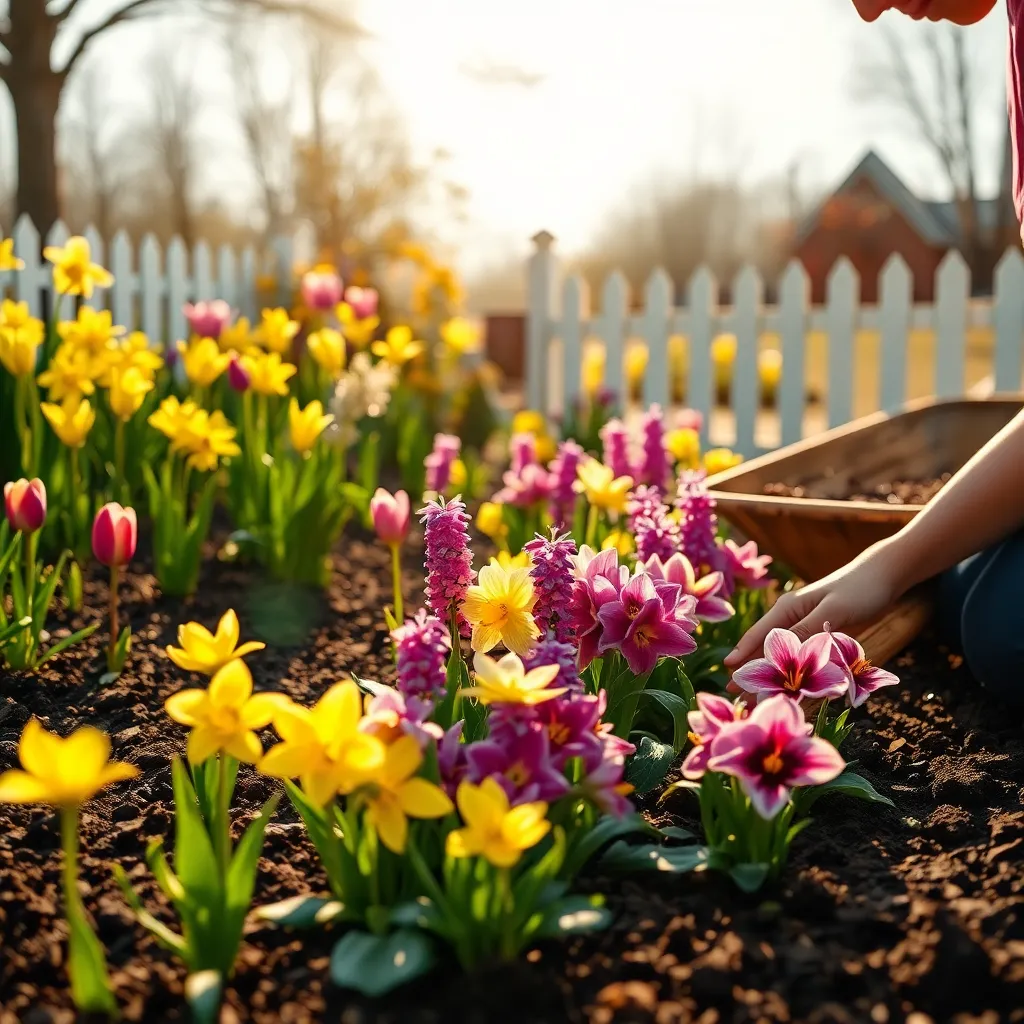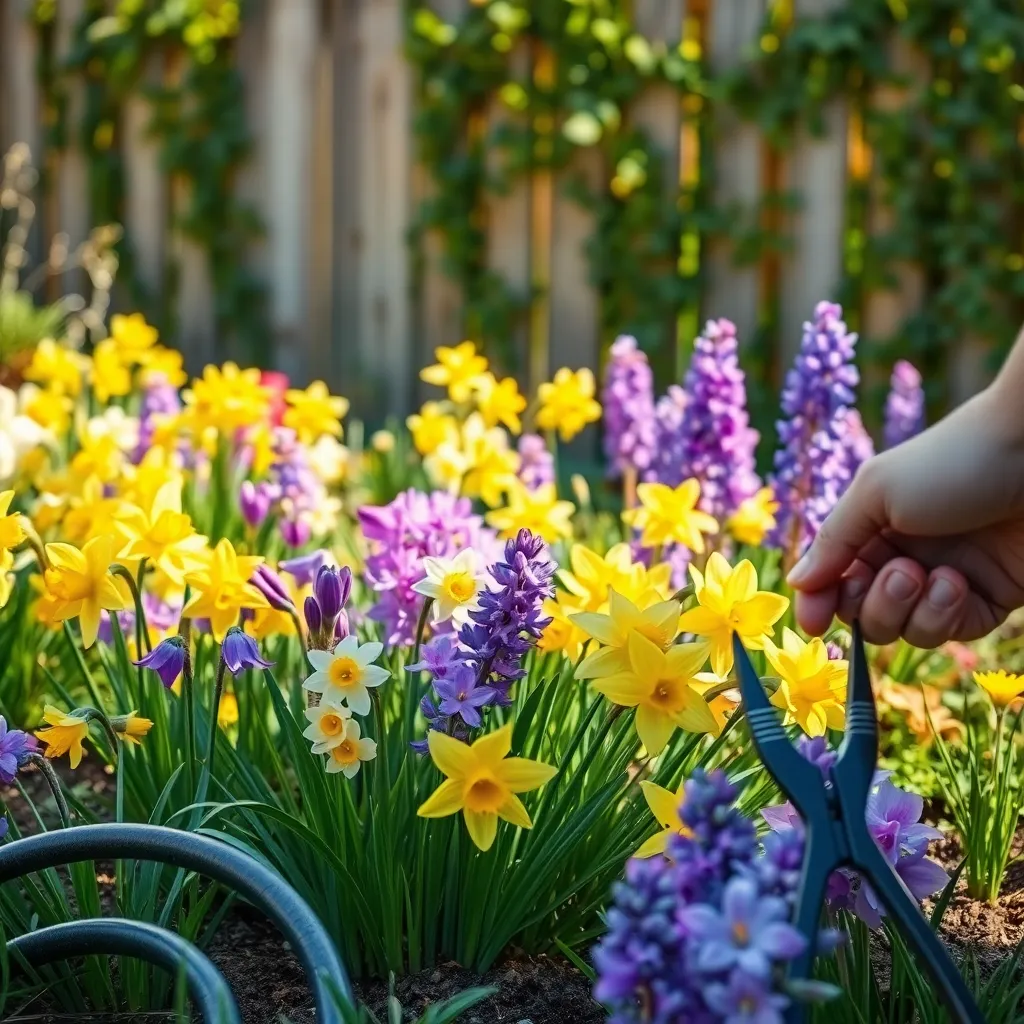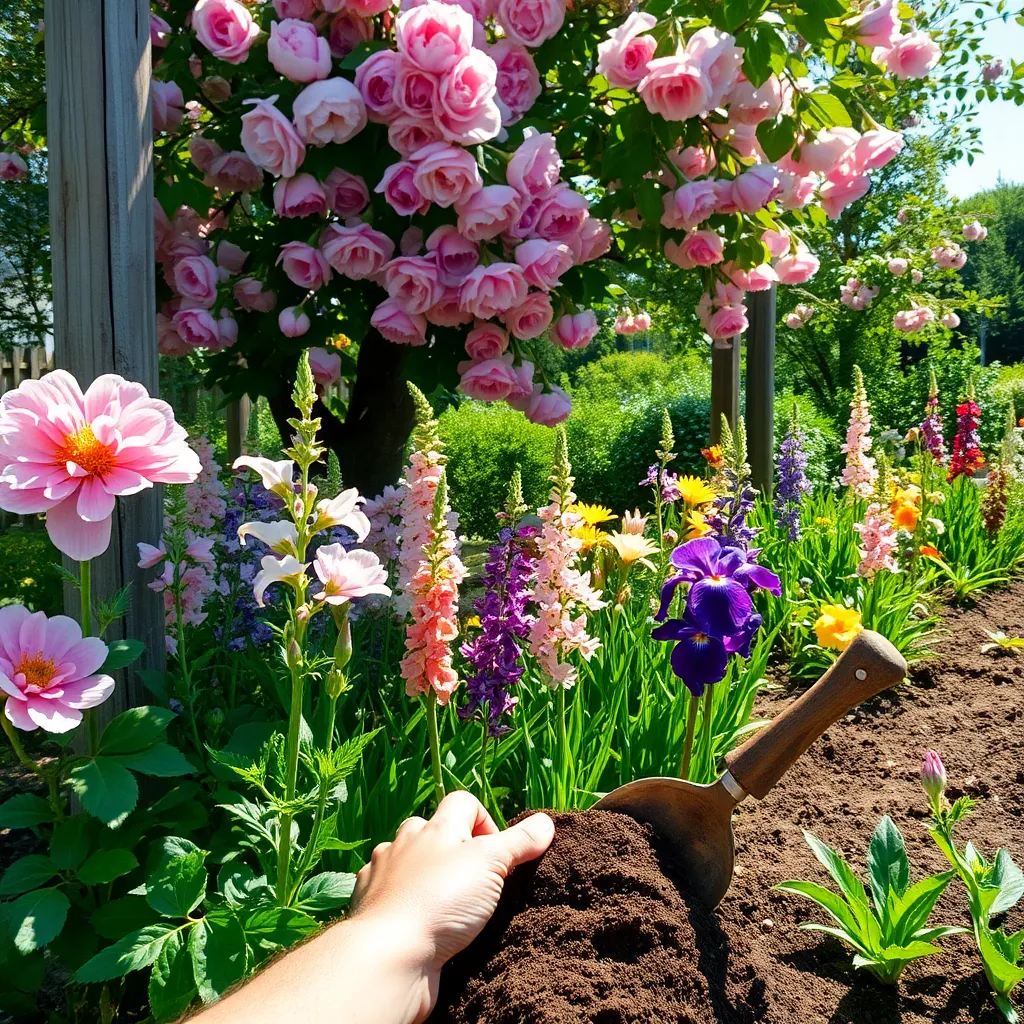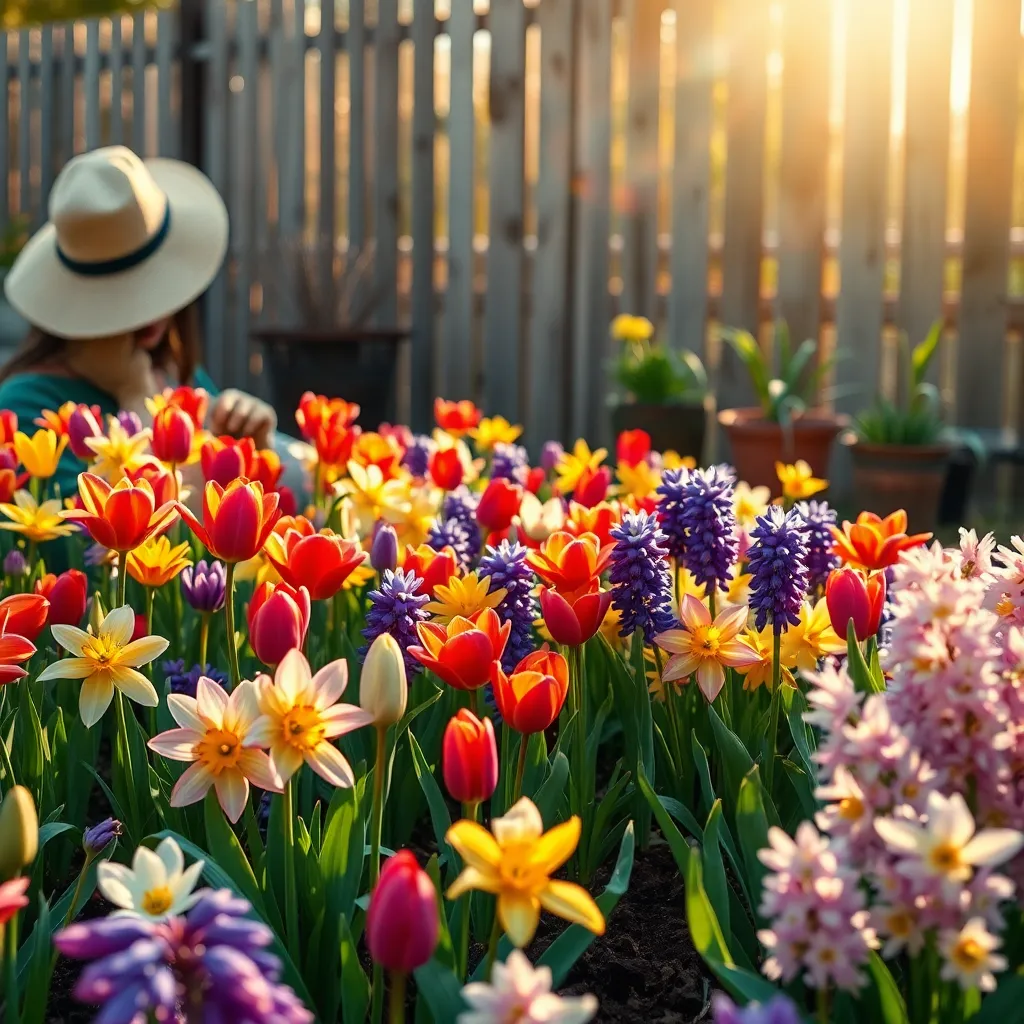Spring is nature’s way of saying, “Let’s bloom!” As the chill of winter fades, there’s an invigorating sense of renewal in the air, inviting both novice and seasoned gardeners to dust off their tools and prepare for a season of growth. The beauty of spring gardening lies in its promise of vibrant blooms and the satisfaction of nurturing life from soil to sky. Whether you’re dipping your toes into the world of gardening or you’ve been nurturing your green thumb for years, this season offers a colorful palette of possibilities that can transform any garden space.
Understanding which flowers to plant in spring is crucial for a garden that thrives throughout the year. While it may seem daunting at first, selecting the right blooms can be an exhilarating project, offering a canvas for creativity and expression. In this article, we will guide you through the best seasonal flowers to plant in spring, catering to both the sun-drenched corners of your garden and the more shaded, serene patches. You’ll learn about the unique characteristics of each plant, discover tips for successful planting, and unearth the secrets to keeping your spring flowers healthy and vibrant.
Whether you have a sprawling backyard or a cozy balcony, this guide is designed to bring out the gardener in everyone. By the end of this journey, you’ll not only know which flowers to plant, but also how to care for them with the confidence of a seasoned pro. So, grab your gardening gloves and join us as we explore the world of spring blooms—where each petal tells a story and every garden becomes a masterpiece waiting to unfold.
Top Spring Blooms to Consider

Consider planting tulips, which are a classic choice for spring gardens. They prefer well-drained soil and a sunny spot, making them perfect for brightening up borders or patio pots.
For a splash of vibrant color, daffodils are a wonderful option. These hardy flowers thrive in full sun or partial shade and are particularly low-maintenance once established, requiring only moderate watering.
Another excellent choice is the cheerful crocus, which can be one of the first signs of spring in your garden. Plant them in clusters for a natural look, and ensure they are in well-drained soil to prevent rot during wet spring months.
Gardeners looking for a more exotic bloom might consider the ranunculus, known for its rose-like petals and wide range of colors. These plants do well in sandy soil and need consistent watering, particularly during periods of active growth.
Early Spring Flower Varieties

Early spring is an ideal time to plant flowers that can withstand cooler temperatures and still thrive. Crocuses are perfect for this season, as they can bloom even when there’s still snow on the ground. For the best results, plant crocus bulbs in well-drained soil with plenty of sun exposure. Regular watering is essential, but ensure the soil isn’t waterlogged to prevent bulb rot.
Another excellent choice for early spring is the daffodil, known for its cheerful, yellow blooms. Plant daffodil bulbs in the fall for springtime blossoms, ensuring they’re placed in soil that’s both nutrient-rich and well-draining. To encourage strong growth, apply a balanced fertilizer when planting. Once blooming, deadhead the flowers to direct energy back into the bulb for the following year.
Tulips also make a striking addition to early spring gardens with their vibrant colors. These bulbs should be planted in the autumn, around 6-8 inches deep in sandy, well-drained soil. To protect tulip bulbs from rodents, consider planting them with a sprinkle of sharp gravel or a bulb cage. After blooming, allow the foliage to die back naturally to store energy for the next growing season.
For a more advanced touch, consider planting hyacinths for their stunning fragrance and rich hues. Place the bulbs in a sunny spot with slightly acidic to neutral soil. Water them regularly but avoid overwatering, as hyacinths are prone to rot. To extend their lifespan, mulch around the plants to retain moisture and warmth, encouraging robust growth.
Colorful Mid-Spring Blossoms

Mid-spring is the perfect time to add a splash of color to your garden with vibrant blossoms. Consider planting tulips, daffodils, and hyacinths, which thrive in well-drained soil and full sun to partial shade.
To ensure healthy growth, enrich your soil with compost or well-rotted manure before planting. These flowers benefit from moderate watering, so water them deeply once a week to encourage strong root development.
Proper spacing is crucial to prevent overcrowding and promote air circulation, which reduces the risk of fungal diseases. Aim to plant bulbs at least 6 inches apart and at a depth three times their height.
For advanced gardeners, consider experimenting with layering bulbs by planting them at varying depths to create a succession of blooms. This technique not only maximizes space but also extends the flowering period, allowing you to enjoy a continuous display of color throughout the season.
Late Spring Flowering Options

For gardeners looking to extend their garden’s bloom into late spring, consider planting *peonies*. These lush flowers thrive in well-drained soil enriched with compost, and they require full sun for at least six hours a day to reach their full potential.
An important aspect of peony care is ensuring proper spacing; plant them about 3 to 4 feet apart to ensure good air circulation. This helps prevent common issues such as botrytis blight, which can be mitigated by removing any fallen leaves or debris around the base of the plant.
Another excellent late spring flowering option is the *iris*. Irises prefer a sunny location and benefit from slightly acidic to neutral soil. For best results, plant rhizomes just below the soil surface, ensuring that the tops are exposed to sunlight.
Water irises regularly during their growing period, but be cautious of overwatering, especially if your soil retains moisture. As an advanced tip, dividing your iris clumps every three to four years can promote healthier blooms and prevent overcrowding.
*Alliums* are a striking addition to the late spring garden, known for their bold, globe-shaped flowers. These plants are not only drought-tolerant but also deer-resistant, making them a low-maintenance choice for many gardeners.
For optimal growth, plant allium bulbs in the fall in a location that receives full sun. Use a light, sandy soil mix to ensure proper drainage, and refrain from watering excessively once the bulbs are established.
Caring for Spring Flowerbeds

Caring for spring flowerbeds begins with understanding the importance of soil preparation. Start by enriching the soil with compost or well-rotted manure, which will provide essential nutrients and improve drainage.
Choose plants that are well-suited to your local climate and soil conditions for the best results. Consider the light requirements of each plant, ensuring that sun-loving flowers are given ample sunlight, while shade-tolerant varieties are placed accordingly.
Watering is crucial during the establishment phase of your spring flowerbeds. Regularly check the moisture level of the soil, aiming to keep it consistently moist but not waterlogged, especially in the first few weeks after planting.
To further nurture your flowerbeds, consider applying a layer of mulch around your plants. This will help retain moisture, suppress weeds, and gradually add organic matter to your soil as it breaks down.
For those looking to take their gardening to the next level, consider implementing a feeding schedule using a balanced, slow-release fertilizer. Apply this fertilizer according to the package instructions to avoid overfeeding, which can harm your plants.
Monitor your plants regularly for signs of pests or diseases, acting quickly to address any issues. Practice integrated pest management by encouraging beneficial insects and using organic treatments as needed to minimize chemical use in your garden.
Conclusion: Growing Success with These Plants
As we’ve explored, the journey of cultivating a flourishing relationship can be likened to planting seasonal flowers in spring. First, recognize the importance of understanding and respecting each other’s needs, much like choosing the right flowers for your garden. Second, nurture your bond with consistent communication, akin to watering your plants regularly. Third, embrace patience as your relationship evolves, similar to watching flowers bloom over time. Fourth, celebrate the diverse qualities each partner brings, just as a variety of flowers create a vibrant garden. Finally, address challenges with compassion and understanding, ensuring your relationship remains resilient, much like tending to your garden’s health.
To bring these concepts to life, take a moment today to engage in a heartfelt conversation with your partner about your shared vision for the future. This simple step can deepen your connection and set the stage for growth.
Remember, relationships thrive with continuous care and attention. Bookmark this article now as a resource to revisit and reflect upon these principles. As you nurture your relationship, you pave the way for lasting success and joy, much like a garden full of blossoming flowers in spring. Let this be the season of growth and transformation for your love.

